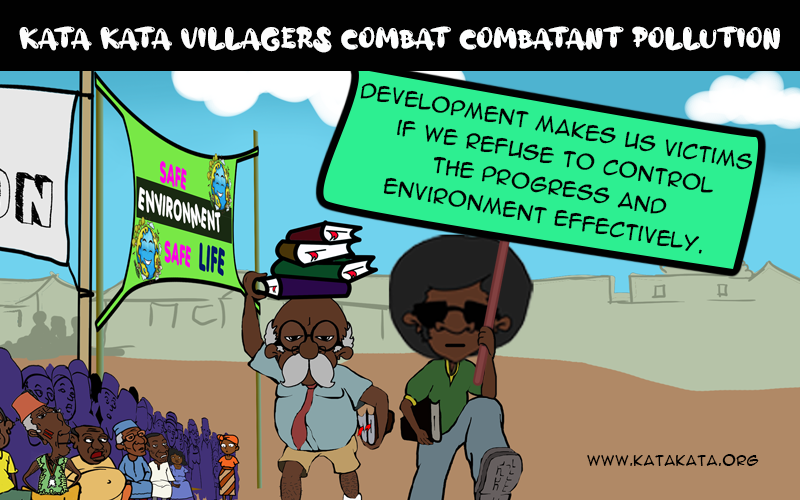Technology: The harmful impacts on the environment.
There is no doubt that the technological revolution has huge hugely electrified the world as well as simplified everything in our lives. Your laptop, cell phone, Tv, car, and kitchen equipment are products of technological wonders. Technology is unmissable and unavoidable in homes, schools, offices, industries, and transportation. Thanks to technological advancements, things that take us a long time to do today can be done in seconds. Life would be difficult without technology. Days are gone when one has to go to the post office to send a message to loved ones or travel hundreds of kilometres to talk to or see friends. The telephone and other interactive devices like zoom have made this possible.
However, despite all the enormous benefits of our technological advancement, it comes with other harmful challenges. Technology is a double-edged ironical sword; it can help us in one way and harm us in another - especially in the environment. It has the ability to both cause and repair environmental damage. The development of technology has caused adverse effects on the environment that threaten living organisms and people. Misusing technology and improper implementation also lead to environmental pollution, affecting human lives. How does technology impact the environment negatively?
Resource depletion
The production of technological goods has led to the overexploitation of resources. While applauding our technological advancement, we seem to forget that many minerals and other natural resources are used to produce goods we enjoy. We use precious metals and aluminium to produce computers, while producing cables and other electrical conductors are impossible without copper. Our electronic devices and other modern technologies require a significant amount of finite natural resources and precious metals. All these resources come from mines, and mining causes deforestation, landscape degradation, water pollution, and the free of large amounts of carbon dioxide and carbon monoxide into the atmosphere. Digging also releases toxic substances into the environment. In addition, building a factory to produce the finished goods often comes at the cost of deforestation. This act not only encroaches on living organisms' habitats but also causes climate change, a global challenge that puts multiple lives at risk.
Emission
Manufacturers of technological products require enormous energy to turn them into the complex electronic and technological products we use. Massive servers and databases that enable these technologies to work consume enormous energy. Factories need energy; trucks need diesel. Cars, planes, power plants, and factories emit carbon into the atmosphere. They are also released when non-renewable fuel sources are burned for energy. Technology production and transport generate additional emissions. Transporting these products around the world contributes to carbon emissions and air pollution. Greenhouse gases trap heat and radiation and reflect it onto the planet's surface, contributing to global warming.
Scientists have observed that the Earth's mean surface temperature has been at an all-time high since the turn of the century, rising by 0.8 degrees Celsius. According to Professor Brian Hoskins, CO2 levels were at their highest in about 4.5 million years, with fossil fuel burning being the main contributor and deforestation being another cause of increased global warming. Nitrogen oxides and other gaseous emissions from industry and vehicle emissions significantly contribute to poor water quality.
E-Waste
Tech waste has also become one of the environmental hazards. When used electronics break or become obsolete, they are discarded. These obsolete materials can be harmful to humans and the environment. According to research, we throw away $62.5 billion of e-waste annually, with only a tiny percentage of end-of-life devices being recycled. In addition, only about a fifth of the world's e-waste is officially disposed of; most of it is landfilled or incinerated in landfills. A good number of electronic devices contain non-biodegradable materials, heavy metals and toxic substances that can be released into the environment. They can cause deadly environmental hazards to the water we drink, the plants and the meat we eat.
Although efforts are being made to recycle electronic devices, the process is complex and costly. Worse still, a significant amount of waste is shipped to developing countries where environmental safety standards do not exist or are hardly enforced. Outdoor incineration is often used to release harmful particles, heavy metals and toxic chemicals. All these harmful technological impacts are good reasons for one to bother.
Agricultural degradation
Although advances in farming technology have resulted in more affordable and diverse food options, technological advancements that improve production, such as pesticides, herbicides, and chemical fertilizers, can also harm the environment. While modern fertilizers increase yields, they remain in the environment, causing soil and groundwater damage and dead zones in lakes and oceans. Pesticides can kill pests that harm current crops, but they also kill beneficial insects and amphibians, and they can breed pesticide-resistant insects that harm future yields.
Where does one go from here? While technological development has become an integral part of our lives, we must strike a balance between accepting technology and protecting our environment. We can do without technology, but we are inseparable from our environment.
To achieve this equilibrium, we must work with our governments and environmental organizations to find solutions. It would be a colossal mistake to urge people to avoid using technology; instead, it should be used responsibly. By so doing, we will be able to enjoy both our technological advancements and our precious environment.
More on pollution, visit: https://storage.googleapis.com/katakata-cb1db.appspot.com/pdfs/jabs/1642876418

